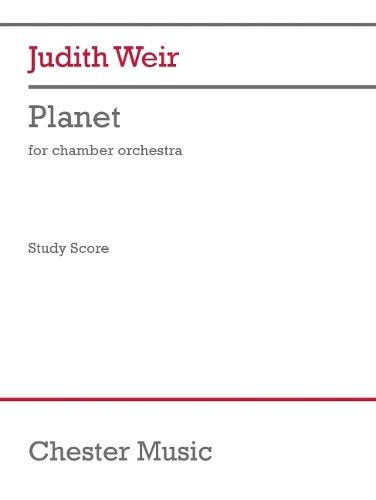Readings Newsletter
Become a Readings Member to make your shopping experience even easier.
Sign in or sign up for free!
You’re not far away from qualifying for FREE standard shipping within Australia
You’ve qualified for FREE standard shipping within Australia
The cart is loading…






(Study Score). "Study score for Weir's orchestral work commissioned by Britten Pears Arts for the Aldeburgh Festival 2024 where Weir was Composer in Residence. PLANET is a set of three short orchestral pieces inspired by views of our planet, and galaxy, photographed from outer space. These are: (1)"The blue marble"/Apollo 17 (2)"The pale blue dot"/Voyager 1 (3) Cluster NGC 6355 /Hubble Space Telescope Musically, the three movements are primarily studies in texture and harmony. (1) explores a wide, almost- static set of chords (2) adark, thin atmosphere, briefly illuminated towards the end by shafts of sound (3) a dense collision of instrumental groups, eventually forming a rich harmonic mass. It may seem strange to have explored such a huge, cosmic subject by means of a smallish Mozart-sized orchestra. My inspiration here was a visit to the ingenious Eise Eisinga Planetarium at Franeker in the Netherlands (completed in 1781, and now a UNESCO World Heritage Site.) Built in the sitting room ceiling of a modestly sized house, and operated by a clockwork-style mechanism in the loft, it accurately represents the changing positions of the earth, sun, moon and five neighbouring planets, in real time."
$9.00 standard shipping within Australia
FREE standard shipping within Australia for orders over $100.00
Express & International shipping calculated at checkout
(Study Score). "Study score for Weir's orchestral work commissioned by Britten Pears Arts for the Aldeburgh Festival 2024 where Weir was Composer in Residence. PLANET is a set of three short orchestral pieces inspired by views of our planet, and galaxy, photographed from outer space. These are: (1)"The blue marble"/Apollo 17 (2)"The pale blue dot"/Voyager 1 (3) Cluster NGC 6355 /Hubble Space Telescope Musically, the three movements are primarily studies in texture and harmony. (1) explores a wide, almost- static set of chords (2) adark, thin atmosphere, briefly illuminated towards the end by shafts of sound (3) a dense collision of instrumental groups, eventually forming a rich harmonic mass. It may seem strange to have explored such a huge, cosmic subject by means of a smallish Mozart-sized orchestra. My inspiration here was a visit to the ingenious Eise Eisinga Planetarium at Franeker in the Netherlands (completed in 1781, and now a UNESCO World Heritage Site.) Built in the sitting room ceiling of a modestly sized house, and operated by a clockwork-style mechanism in the loft, it accurately represents the changing positions of the earth, sun, moon and five neighbouring planets, in real time."